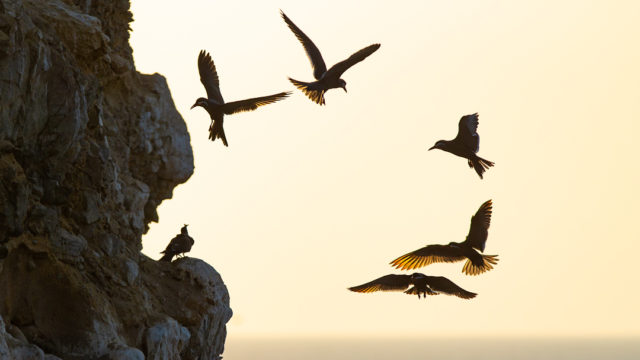The bird with the white moustache is the Inca Tern, so named for its beautiful plumage, likened to the spectacular costumes of the Inca kings.
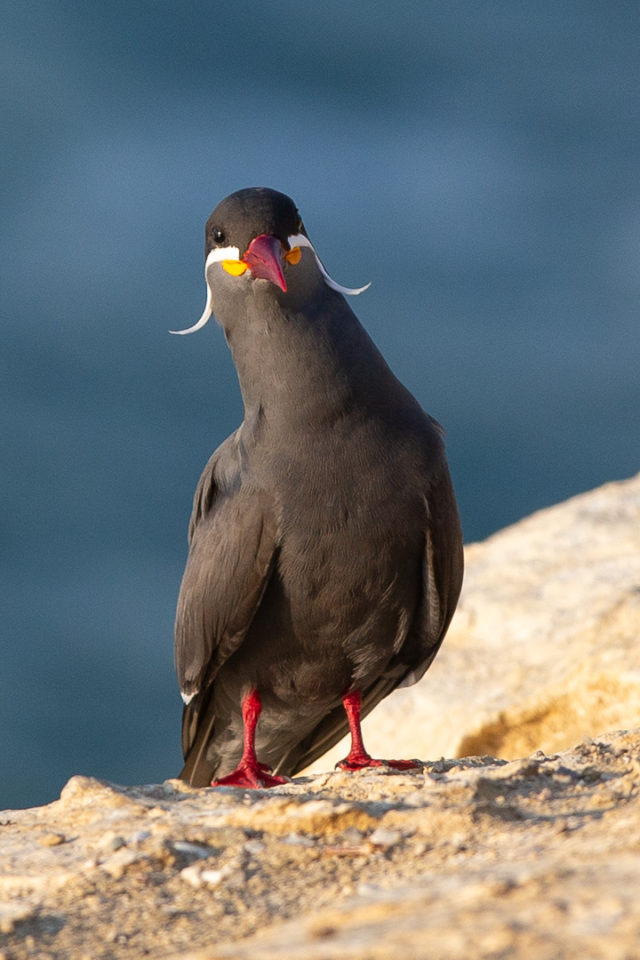
The birds are mainly to be found off the coast of Peru where the Humboldt Current comes close to the shore. This cold current brings a constant upwelling of nutrient rich water from the ocean floor which leads to a bonanza of fish, in particular anchovies, the favourite food of the Inca Tern.
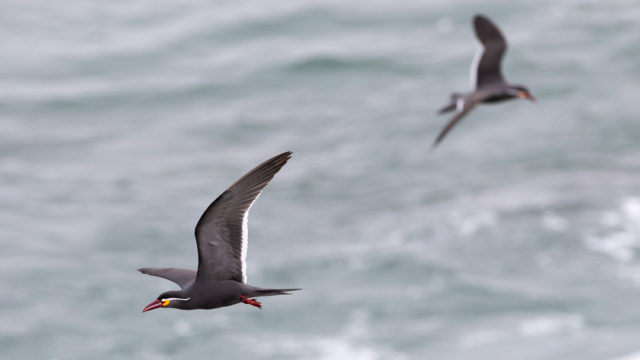
On previous visits to Peru we had seen distant Inca Terns a long way out over the sea, but never close and never on their breeding grounds. The place to guarantee finding the birds is Paracas National Reserve, near to Ica, south of Lima. Getting there meant taking the only road, along the coast where the vast yellow dunes of the Atacama desert reach down to the coast itself.
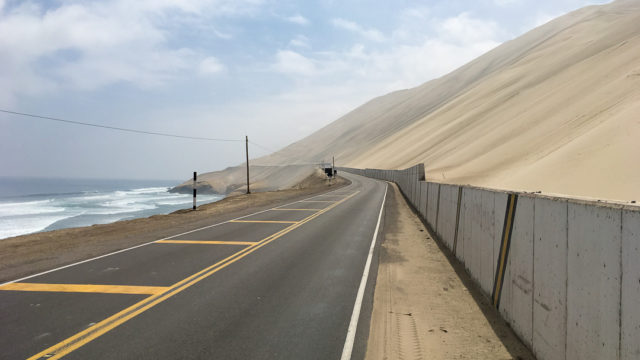
Paracas National Reserve protects both a large part of the ocean as well as the adjoining desert. Getting about, especially away from the few tourist centres is not easy. There are no facilities and a 4-wheel vehicle is essential. Neither of these are a problem to us and we were able to scout out various bays looking for potential cliffs where the Terns might nest.

We found a secluded bay, inhabited by just two fishermen living in a makeshift canvas awning, with whom we exchanged beer for freshly caught Mackeral. We stayed for three idyllic days, surrounded by the endless saffron mountains and lulled to sleep at night by the rythmic wash of the tide coming and going.
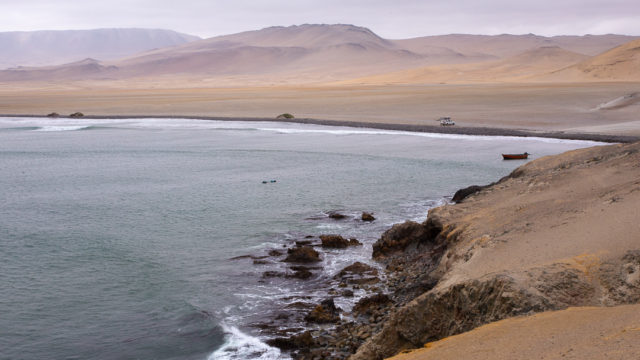
The days were pleasantly hot and every afternoon a strong wind blew off the sea.
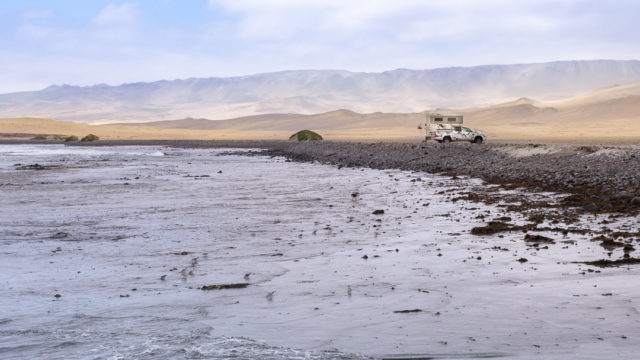
The pebbly seashore awash with strands of green seaweed attracting Sanderling, Surfbirds, Whimbrel and Golden Plover, all migrants from North America. Far off over the waves we could watch as the Inca Terns danced over the surface, occasionally darting into the blue to pick a fish.

Eventually we found a small section of cliff where Inca Terns were breeding. Access was dangerous due to the fragile and sloping edges of the cliff but we were able to watch the birds as they flew right by us.
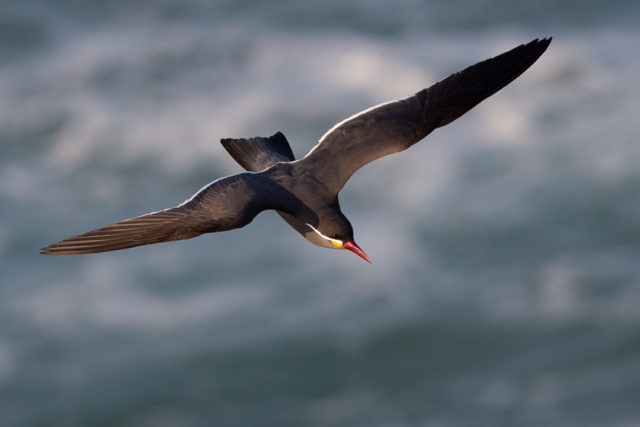
Evenings were the best time to watch for the birds as many more individuals returned to the cliffs from feeding out at sea. At that time, young birds would appear from their sheltered crevices and call to their parents. These calls would send the adults into a frenzy of activity, fluttering around the cliff tops, uttering a soft mewing sound.
